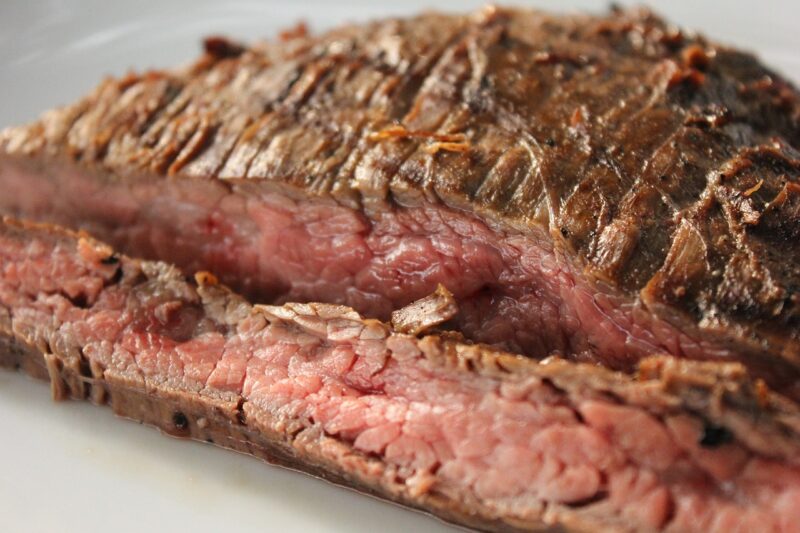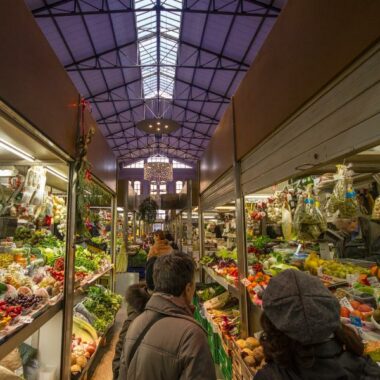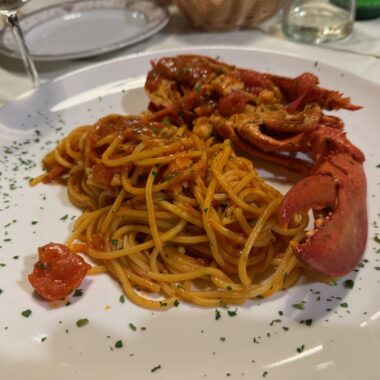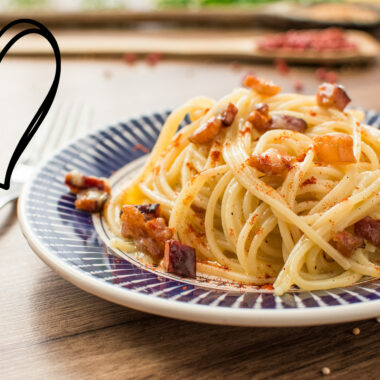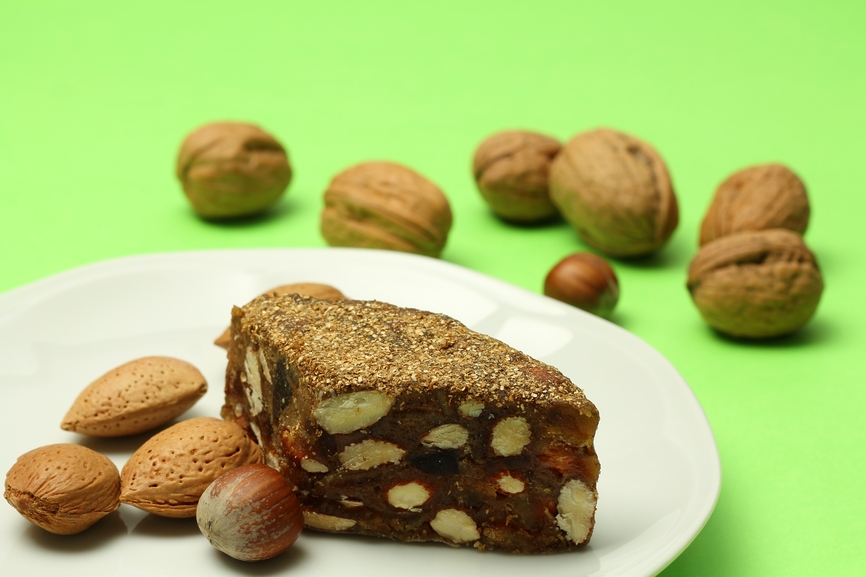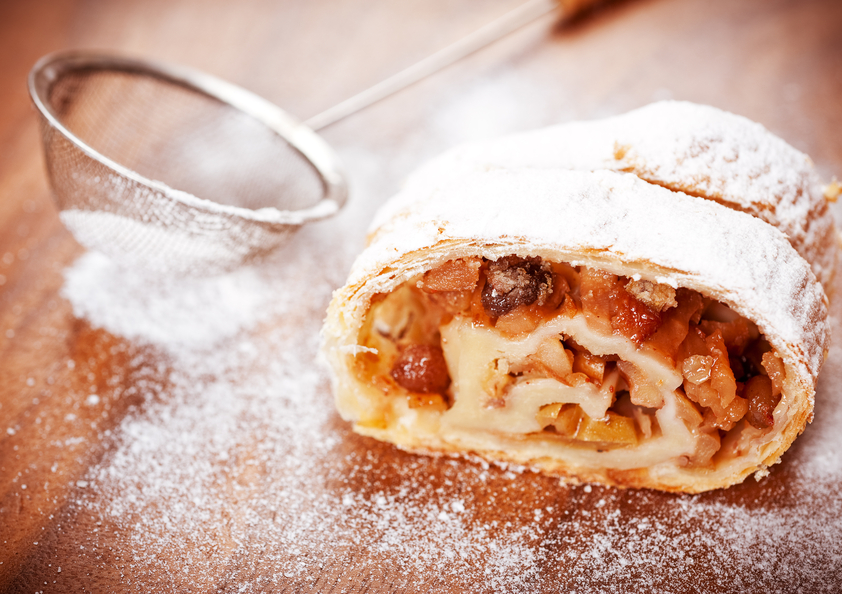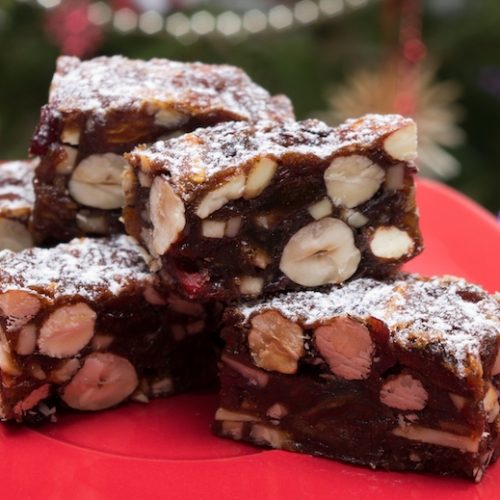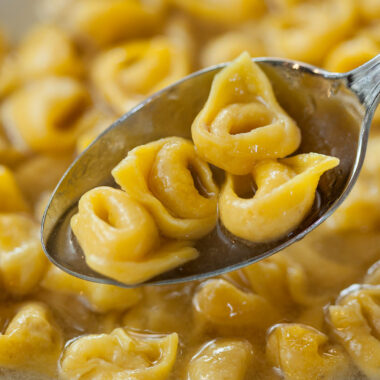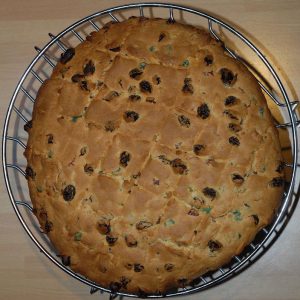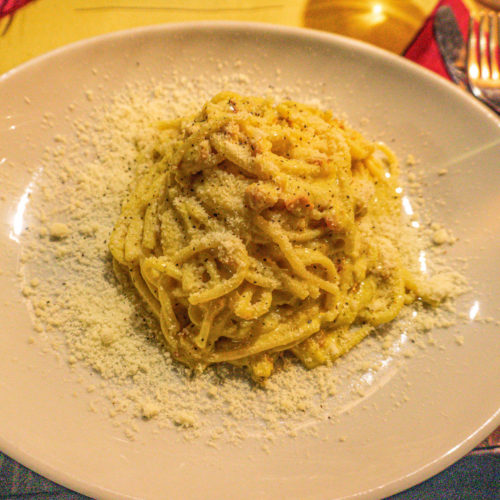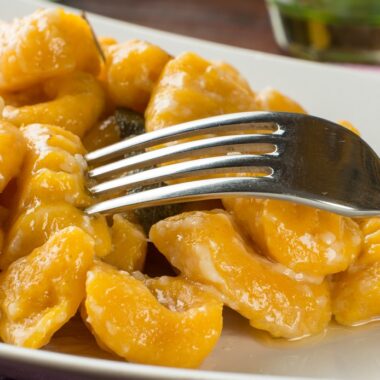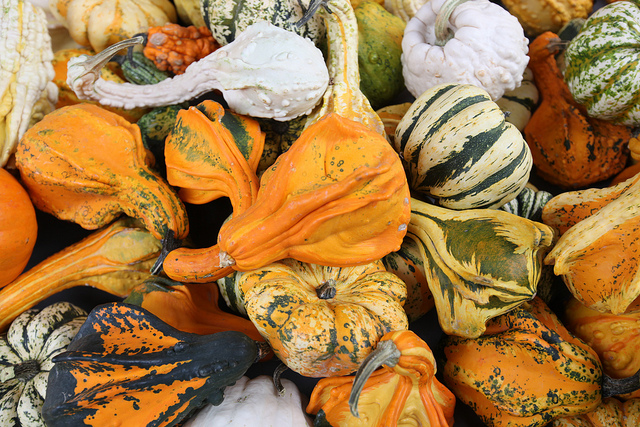Florentine steak (Bistecca Fiorentina) is a Tuscan delicacy with a long and fascinating history. This sort of meat has gained worldwide acclaim not just for its high quality, distinct flavor, and flawless preparation, but also for its cultural significance in the Tuscan culinary tradition.
Florentine meat is a general term for many sorts of high-quality beef from Tuscany. The Florentine steak is the most well-known and typical cut of this meat, although other cuts such as the rib (costata), fillet (filetto), and cut (tagliata) are very delicious and valuable.
Today I’ll concentrate on the famous Florentine steak, but don’t forget that the other cuts of meat are just as essential and must-try in an Italian steakhouse!
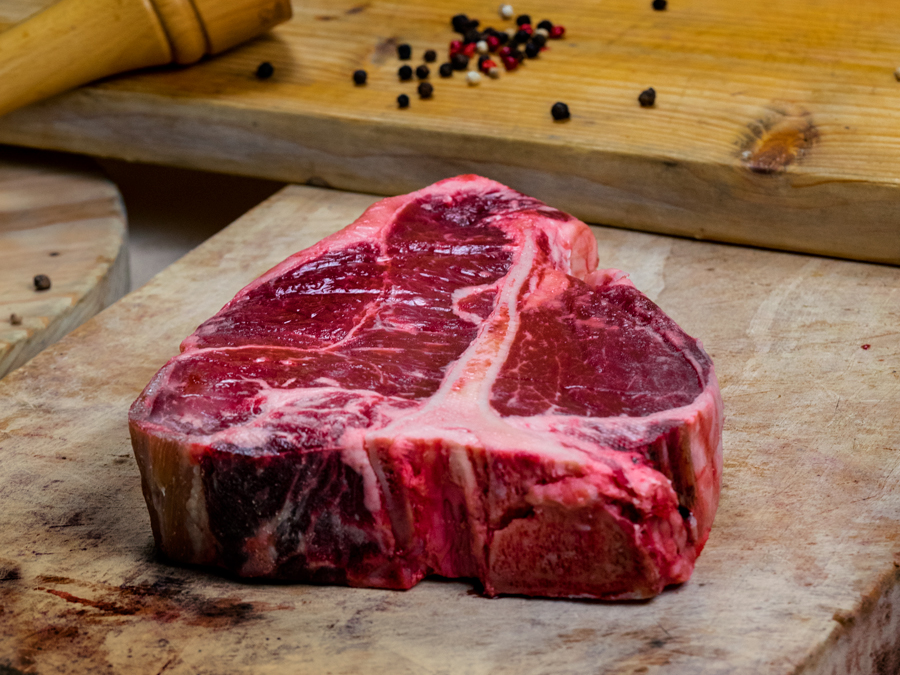
The Florentine Steak’s History
Because we are in Italy, the origin of the word bistecca must be mentioned. The word is thought to be a reconstructed sound of beef steak (the Italian pronunciation is “bif stec“). Alternatively, according to other versions, we must thank the English nobility who, when invited to Florentine banquets, exclaimed beef steak at the sight of the cut of beef.
We don’t know where it came from, but I can’t deny that the mysteries surrounding this cut of meat add to its allure.
Florentine beef has a long history that is rooted in Tuscan culture and gastronomic heritage. The Florentine steak, for example, dates back to the 1400s and 1500s, when meat was a valuable and uncommon dish saved for special events and festivities. It was usual to consume beef to commemorate the arrival of the night of San Lorenzo, according to legend. It was a particular cut selected from the most valuable section of the bovine and cooked directly on the grill using a cooking technique passed down from generation to generation.

Bistecca Fiorentina’s main unique features
Then there’s the beauty. The Florentine steak is an art in every way, and the excellence is evident at every stage of production. To begin, it must meet the following requirements:
- The bovine must be of the Tuscan Chianina breed and aged 14 to 18 months (with certain exceptions).
- At least 5 cm in height (strictly measured with fingers)
- Bright pink flesh color
- Have a minimum weight of roughly 800gr and a maximum weight of no more than 1500gr.
Steak is traditionally cut from the loin, right below the rib cage. Remember that the traditional T-bone (which is actually only half of the animal’s rib) must be present when the Florentine steak is served.
When we discuss the definitions of different slices of meat, there is often uncertainty, and I admit that I am not always able to overcome it. Even the Florentine steak is more complicated than it appears. For some, it must comprise both the fillet (filetto) and the sirloin (controfiletto), while for others, only the fillet is sufficient.
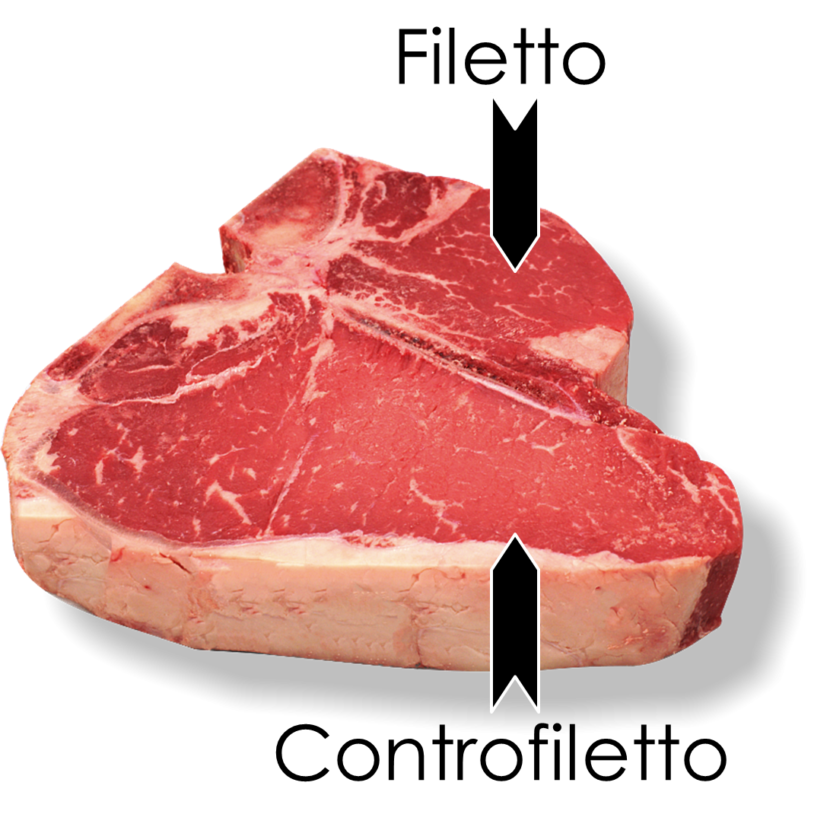
What I can tell you is that fillet is the most prestigious cut of meat. It is obtained from the great psoas muscle, and because it is not too stimulated during the animal’s life, it remains especially delicate to chewing.
However, because sirloin is derived from the dorsal muscle, it is slightly less soft.
We beg to eat it, but where does it come from?
Tradition holds that not all animals grazing in the lush Pianura Padana are suitable for this renowned cut.
The Florentine steak is traditionally made from the Chianina breed, a Tuscan type with a white coat. If you’ve ever been to this region, I’m sure you’ve seen it.
Chianina Breed
Thinking of Chianina, I can’t help but recall my undergraduate courses in animal husbandry and genetic evaluation. Everyone is aware that Chianina meat is quite valuable, and without going into too much detail, we can also explain why it is so pricey.
The Chianina was a bovine breed marked by labor that had been bred since the Romans. It went through clayey soils with the plow and carts. During those years, the selection was aimed at producing animals that were progressively huge, tall, and robust, because the main purpose was to employ the animal as a driving machine.
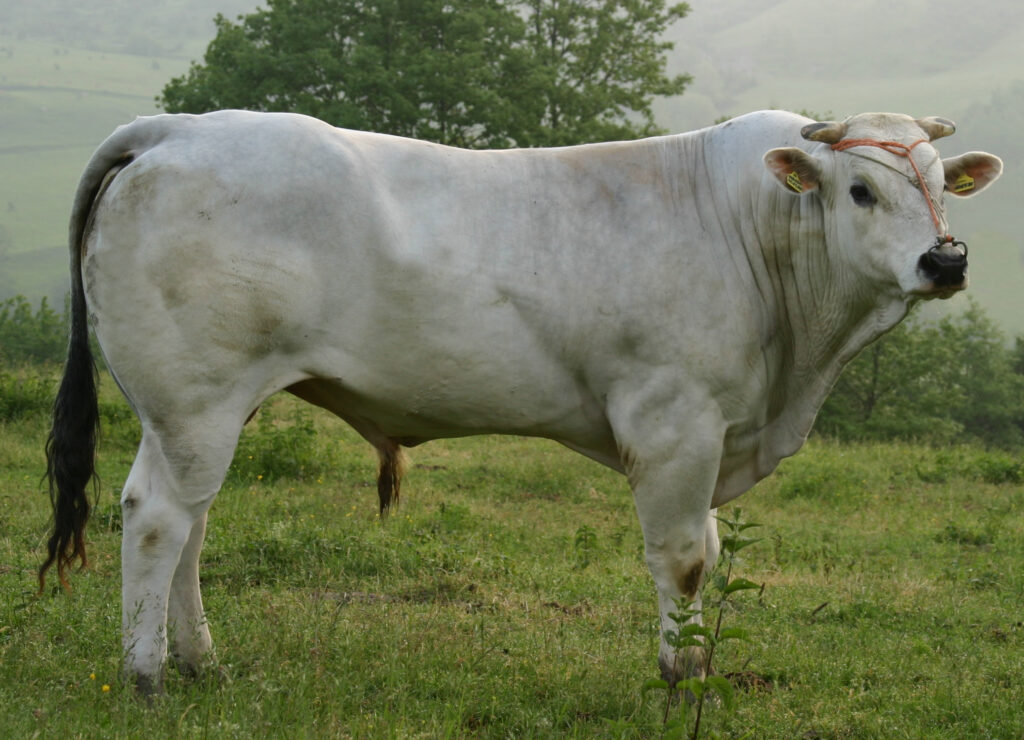
When interest in these agricultural animals waned, the industry began to employ them as a meat breed (razze da carne, as we say in Italy), despite their many flaws, such as thick and tough skin and lengthy limbs. These scraps diminish the animal’s production at the slaughterhouse, which is roughly 60%, raising the net price of the animal.
The current Chianine retains characteristics inherited from their forefathers. This is why Chianina cuts are quite expensive.
It is difficult to keep up with the increasing demand, thus various breeds have been introduced over time to achieve Florentine steak. These white-cloaked breeds, along with the Chianina, are the only ones permitted to get this cut of meat.
Marchigiana Breed
She’s Chianina’s younger sister, or so I like to think of her. Females do not surpass 9 quintals and stand about 150 cm tall. It was created as an artificial breed through a series of crosses between the original podolic strain and a Chianina bull. The Romagnola was added later in the twentieth century. Because the yield at the Marchigiana slaughterhouse is between 63 and 65%, the pricing is slightly cheaper.

Romagnola Breed
The Romagnola is the least valuable of the three breeds, with a little lower slaughter output than the Marchigiana. The coat is distinctive in that it is light grey in females and dark grey in bulls when they are born.

The notorious cooking procedure is one of the secrets
The meat should be rested before cooking. This rest period is critical and is most likely one of the most important variables. Just for the sake of comparison. When dedicated to large-scale consumption, everyday over-the-counter beef is never permitted to rest for more than 2 or 3 days. Instead, the Florentine steak is rested for 15 to 21 days.
This is the most well-known ripening process (frollatura). If the flesh was cooked immediately after being slaughtered, it would be exceedingly stubby and nasty.
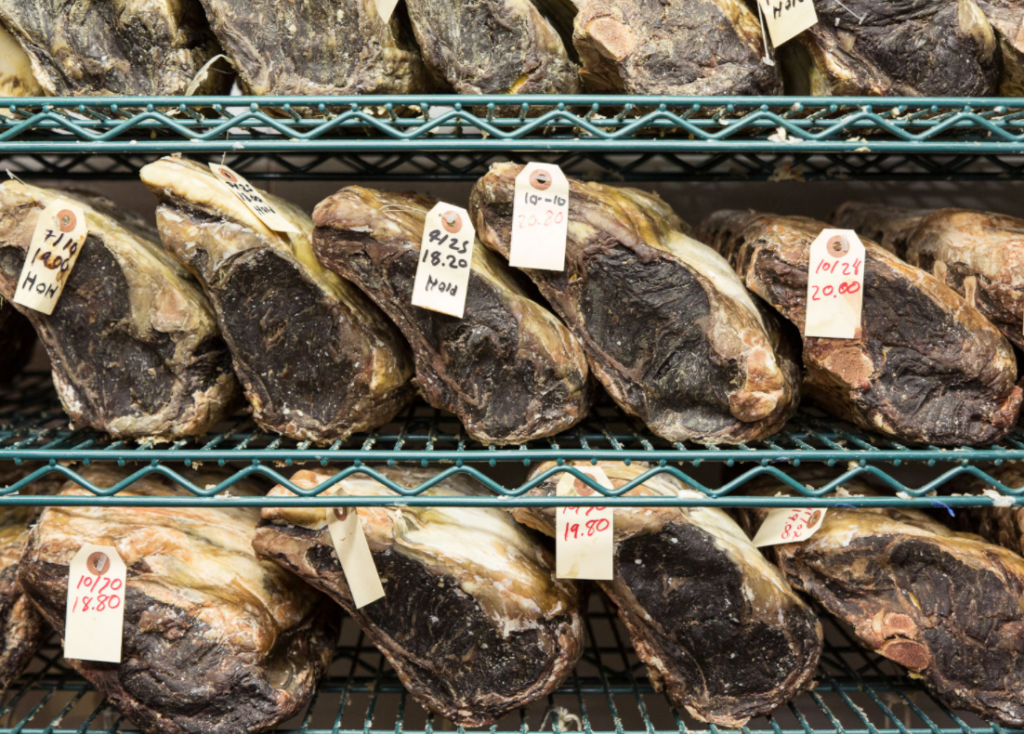
The steak must be grilled strictly on a wood-fired grill, but not too quickly! When the embers turn bright red, the temperature has reached 200-250 °C.
It should never be cooked immediately after being retrieved from the refrigerator, but rather at room temperature. Tradition dictates that I leave the fridge open for at least 4–5 hours before cooking.
Cooking the bistecca fiorentina on the bone side for 15–20 minutes is a technique that not everyone is aware of. Furthermore, the thicker the cut, the less hot embers should be used to avoid overheating it. Then follow about 7 minutes of cooking per side, until the degree of cooking does not satisfy you.
The most discriminating consumers consider the addition of pepper, rosemary, oil, and other seasonings to be a sign that the meat quality is poor. If you want to make a nice impression, simply serve it with a sprinkle of salt. It’s significant, take note!
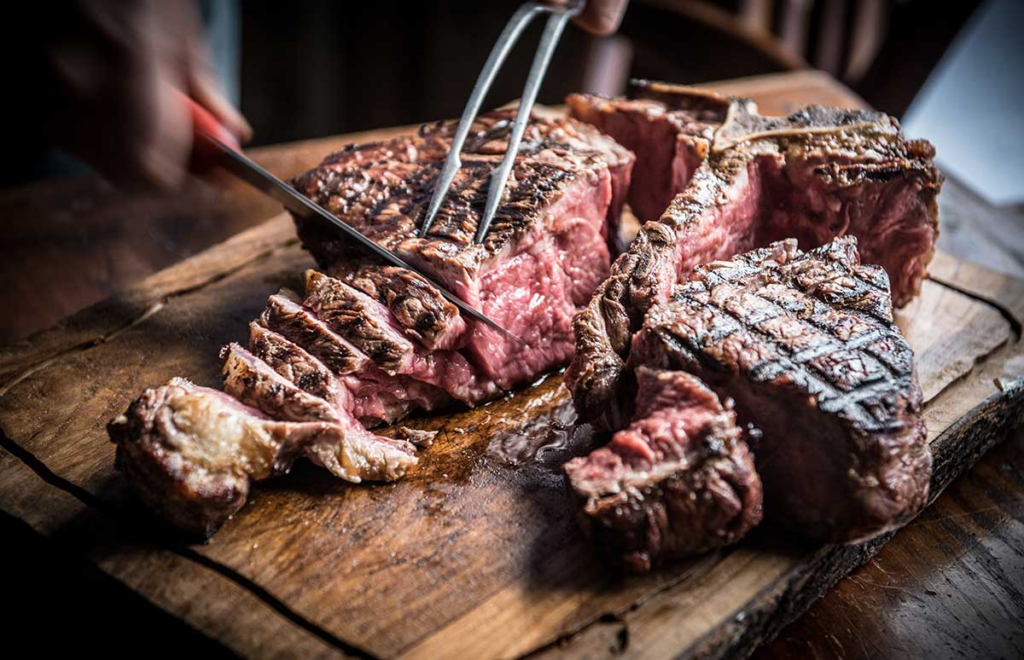
A tasting invitation
The intake of Florentine beef is an all-around experience that extends much beyond the enjoyment of flavor. In fact, Florentine steak is a staple of Tuscan cuisine and an emblem of Italian culinary tradition.
It is noted for its high quality, softness, and rich and aromatic flavor. All Florentine meat cuts are of great quality and the consequence of a lengthy Tuscan culinary tradition, making this specialty a true gastronomic gem.
Furthermore, the eating of Florentine beef helps to maintain the local economy and traditions. Farmers in Tuscany, in fact, devote their life to the care of animals and the production of high-quality meat, and eating Florentine meat supports their efforts.

I can’t help but recommend that you try a great Florentine steak at a Florence steakhouse!
We’ll see you soon!
